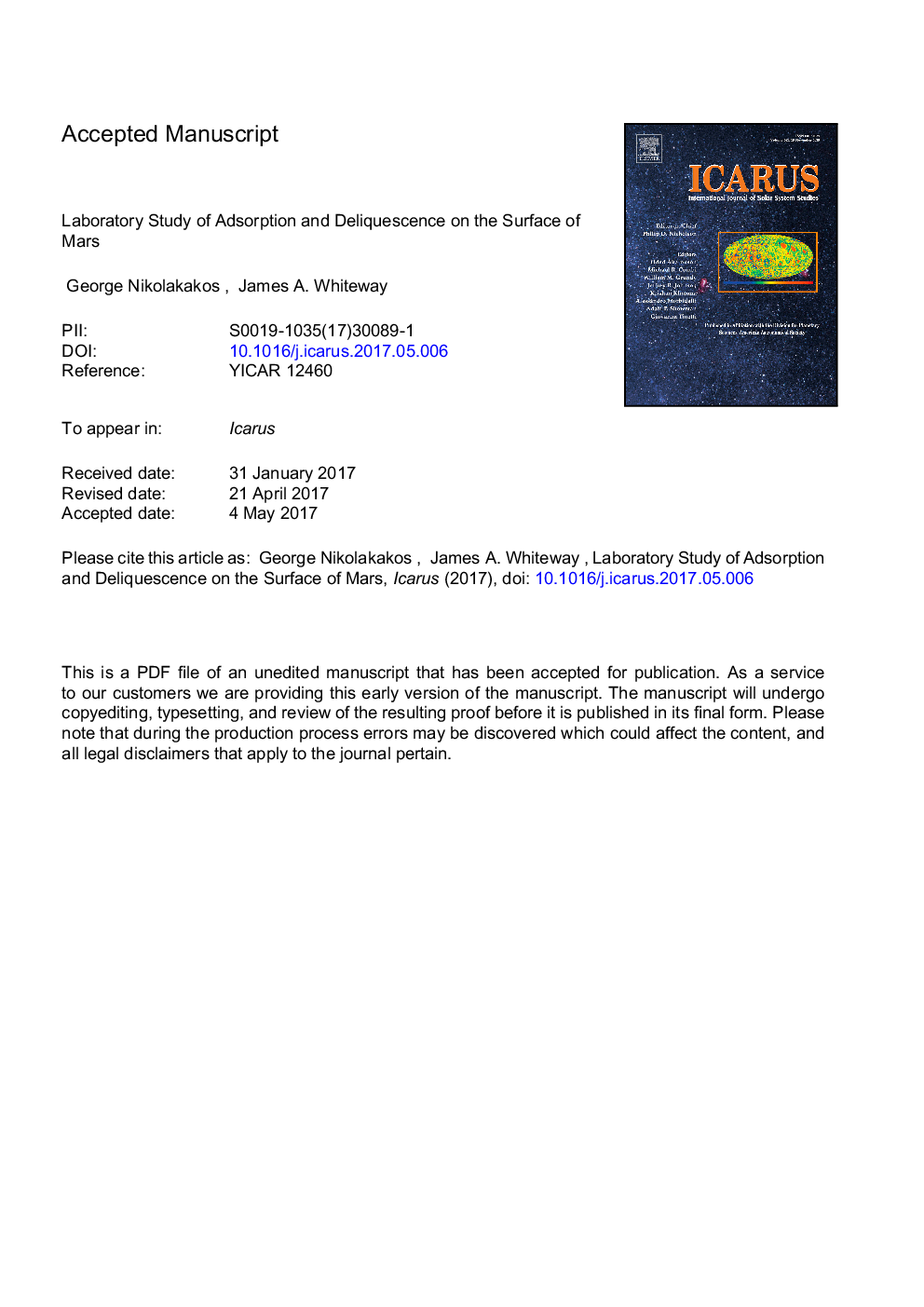| Article ID | Journal | Published Year | Pages | File Type |
|---|---|---|---|---|
| 8134180 | Icarus | 2018 | 34 Pages |
Abstract
A sample of the zeolitic mineral chabazite was subjected to a range of water vapor pressures and temperatures found on present day Mars. Laser Raman scattering was applied to detect the relative amounts of water and carbon dioxide adsorbed by the sample. Results show that zeolites are capable of adsorbing water from the atmosphere on diurnal time scales and that Raman scattering spectroscopy provides a promising method for detecting this process during a landed mission. When the water vapor pressure and temperature were sufficiently low, the zeolite sample also adsorbed carbon dioxide, resulting in the simultaneous adsorption of water and carbon dioxide on the surface mineral grains. Additional experiments were carried out using a mixture of magnesium perchlorate and chabazite. The sample of mixed surface material remained visually unchanged during water adsorption, but was found to darken during deliquescence.
Related Topics
Physical Sciences and Engineering
Earth and Planetary Sciences
Space and Planetary Science
Authors
George Nikolakakos, James A. Whiteway,
